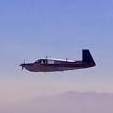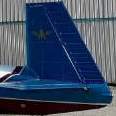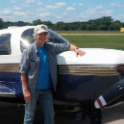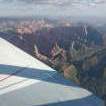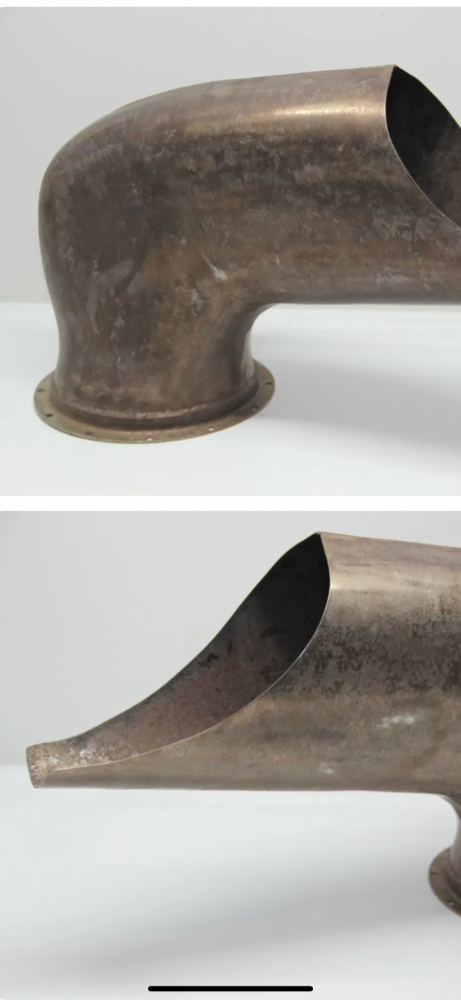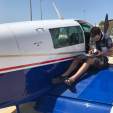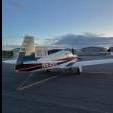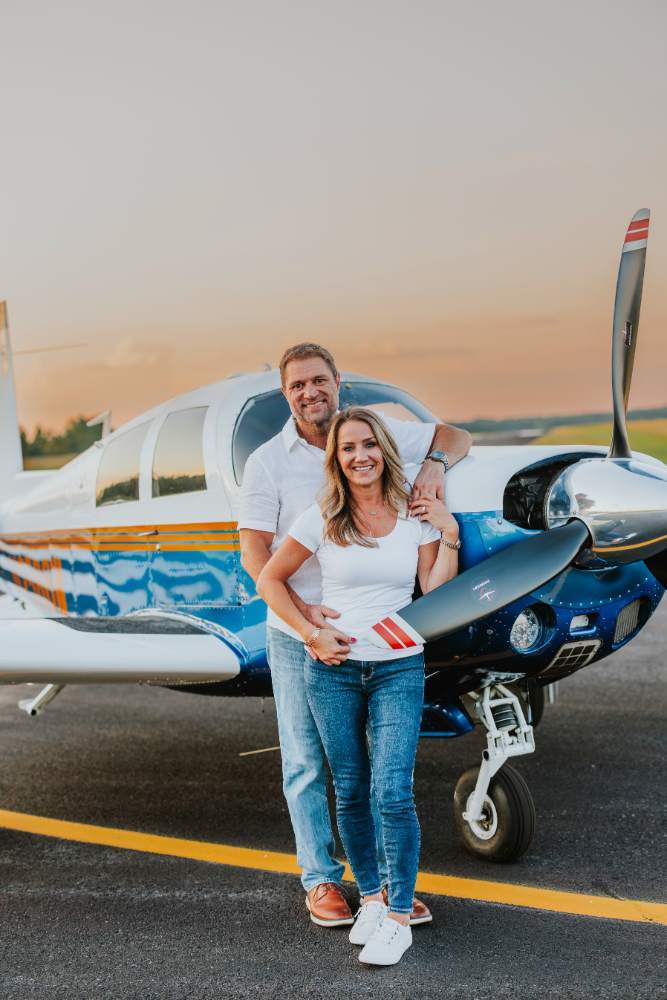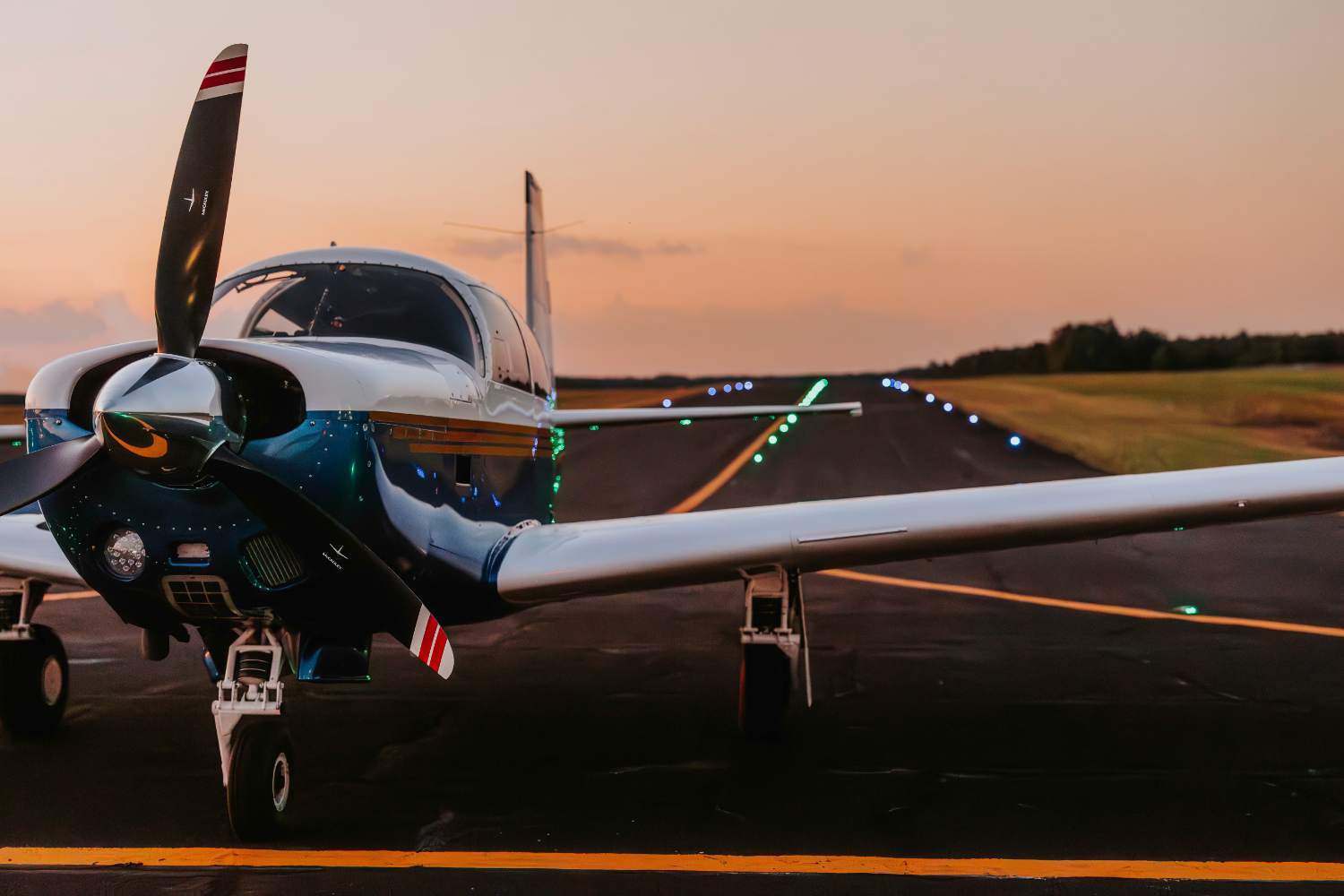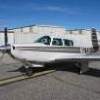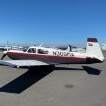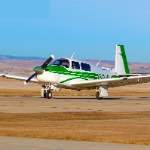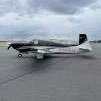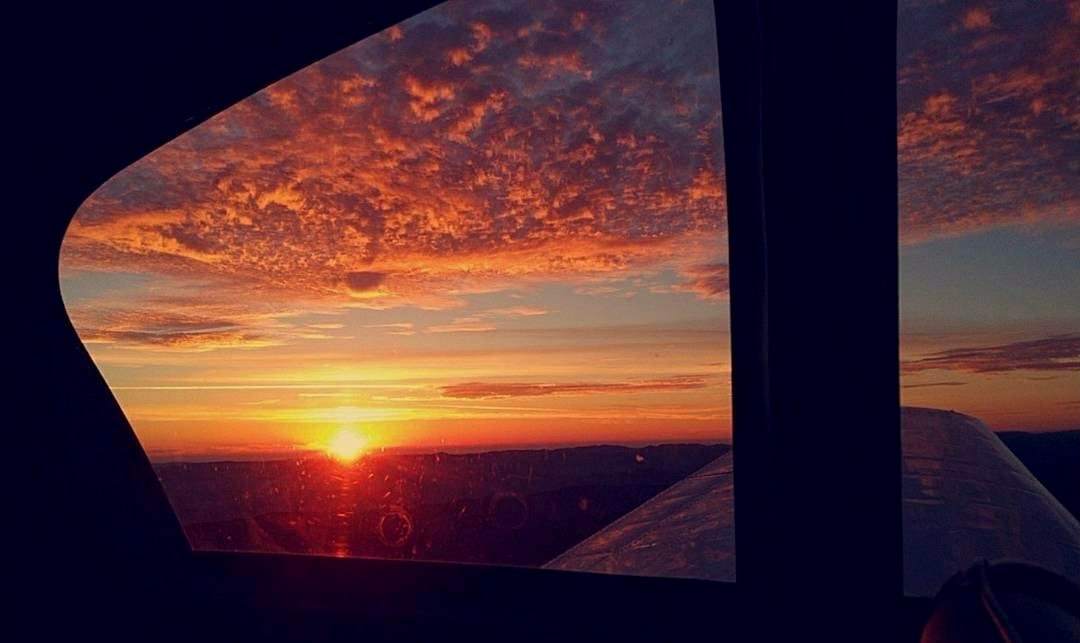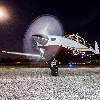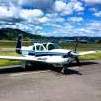Leaderboard
Popular Content
Showing content with the highest reputation on 12/06/2024 in all areas
-
Just to be clear, Yes they are all field overhauls but not to service limits. All of the recognized engine rebuilding shops offer overhauls to NEW limits, which can be just as good if not better than a manufacturer rebuilt - also to new limits - but made with parts that can come from many different engines. A service limit overhaul is not nearly as valuable as a new limit overhaul. To muddy the waters even more, regardless of limits, OH quotes may or may not include accessories. Nor may they include running the initial break-in on a test stand before delivering it. Be sure to know what you’re being quoted. Sent from my iPhone using Tapatalk8 points
-
We did a field overhaul on my IO-360 A3B6D in 2020. It took 6 months. I chose not to keep track of the cost. It was less stressful that way.8 points
-
Not too shabby for a 61 year old C. I had 30+ knot tailwinds the entire trip from Kerrville to W Palm Beach. Sent from my Pixel 9 Pro XL using Tapatalk5 points
-
Let us know when he's done whether he thinks $1200 was enough.4 points
-
Not according to the FAA's guidelines on substitution of GPS for ground-based navaids in AIM 1-2-3 and AC 90-108. Not even the same permissive "monitoring" language as for VOR, TACAN or NDB. You may disagree, but you asked the reason for the Garmin warning.3 points
-
Yep, the guy said he checked with some contacts (assume they have a network) and that's exactly what they said - 2x a small SUV. That's where he got his $1200 estimate from. If we're both happy with the price, seems like a win. I fly a decent amount (about 250-300 hours a year), so it'll be interesting to see how long a pro applied ceramic holds up. My a/c is hangared full time.2 points
-
2 points
-
Mechanic got my J in for rigging today. I was experiencing left roll AND yaw. He went through everything step by step as outlined in the maintenance manual with reference to the very helpful article here https://knr-inc.com/shoptalk-articles.html?view=article&id=106&catid=25 Main highlights were 1. rudder left of reference and 2. asymmetrical flaps, left too high, right too low. Both these make sense, and perhaps explain the issue. Test flight tomorrow will confirm if we are making headway2 points
-
That’s a lot of extra steps to have the convenience of having 3 switches vs a key2 points
-
Hey guys! Anyone interested in a FLY-in lunch at Grand Prairie? It would be fun to meet some local Tx Mooniacs. What do you guys think? Chris1 point
-
Mine are easily visible through the window. So any time I think about moving the prop, I just look1 point
-
The reason the NOAA site was retired was not because of any accessibility issues or even because the agency that manages the site is a research organization and does not want people to rely on it for making decisions. If that were true, they would have shut this site down as well which is the same organization (GSL) that hosted the runsoundings site. Even this other site does say, "PLEASE NOTE: The information on this website is for RESEARCH PURPOSES ONLY. No data from this site should be used to make decisions related to the safety of life and property. There is no guarantee that data will be updated or that any product will continue to be available." Recently, I have seen at least five or six other gov't weather sites that I use regularly get shut down as well (for similar reasons). There are definitive plans to shut down even more gov't weather sites as we move into the next administration. The rucsoundings site was simply low-hanging fruit and much easier to be "retired" as they suggest. So I decided to take the opportunity to develop my own Skew-T diagrams that have features that are more robust than you can find on windy or most any other site...that's assuming they don't remove access to the data that I am using to populate the diagram.1 point
-
I have geckos that live in my hangar and eat the crickets and other bugs. They're all named Gordon.1 point
-
1 point
-
But you also introduce 3 different failure points in the 3-step process. If you pull the key out you do Al that with one step1 point
-
I did a trip to Washington state a couple years ago and was getting a consistent 175 knots. Unfortunately when I flew back the winds were the same and I was only getting 115 knots ground speed. That sucked but at least I wasn’t flying a Cessna 150. I would have been doing 60 knots and watching the freeway traffic pass me by.1 point
-
Putting a quart of MMO right before warming up the oil with a quick flight will make it drain quicker. I was under the assumption that running the engine made sure all the gunk was mixed up in the oil suspended and not settled out in the bottom of the oil pan but maybe an OWT. I start the oil drain and leave it draining for a day or 2 so most if not all the oil is out of the engine with it thinned out. Also much easier to remove that oil filter after the engine and oil filter have cooled down than when it’s hot. I do add mouse milk to the turbo while it’s still hot to help the penetrating oil wick in better.1 point
-
You might want to do one tank at a time. That way if it does turn into a s-show, you can fly it somewhere on the second tank.1 point
-
I was right there with you last week, Eastbound from Houston in my C! It was noticeable on climbout, passing through 6000 msl at 100 mph, groundspeed was 120 knots. The further east I went, the higher groundspeed was. But my level cruise record is 183 knots across NC a few years ago (no hurricane involved!).1 point
-
1 point
-
1 point
-
1 point
-
This got me inspired to protect my paint. My F is a ‘10 meter beauty’. A local guy that specializes in higher end car ceramics is going to do it for $1200. That’s 2x his normal car price and feels fair that it’s twice the job. I’ve got one area that some birds pooped on that needs some correction…the rest of the paint looks decent. If $1200 every couple of years buys me 7-10 more years without a paint job, it’s money well spent. On my last plane I did a DIY and it came out great. The ceramic lasted a full year of frequent flying (250ish hours). I picked up 3+ knots…closer to 4 but for sure 3. The best thing was the summer bugs just fall off.1 point
-
No , The mooney market won’t bare the cost . Some people want quality, others want cost. There is only one engine mfg that ships there engines with Titanium exhaust. Titanium is half the weight of stainless and is covered by a lifetime warranty as I use a particular grade and we have invested in the dies to stamp the clamps that join the muffler to tailpipe, the hardware is inconel . I designed my exhaust stacks for my tbm700 using a 3d printer before final design to the die mfg also in CP2 titanium. Cnc the flange was the easy part.1 point
-
No need to apologize, I learned something new. I figured all the IO-360s were Lycoming 4 cylinder.1 point
-
A club a few hangars down from me used Overhaul Bids with good luck. Assume it’s a 180HP (on some kind of PA-28). Their all-in cost was like $23k and they were down less than a month. Not sure of the shop that did the work, but it was in Texas. The club has their own A&P, so their costs are limited to the overhaul. They got Superior vice Lycoming - I think that was a time decision more than anything. I know all went well as the plane is flown daily. Maybe a tiny gamble…but saving $10-12k might be worth looking into. I’m pretty sure the cost included ground transport. I dropped off a new pallet for them as my dad had ordered a tiller that came on an awesome hardwood pallet.1 point
-
Absolutely! I certainly did not plan on replacing my engine within 3 years of purchase but life happens. Many on here warn of engines that have sat for an inordinate amount of time. Mine spent 6 years in a New Mexico hangar. I thought the drier climate would mitigate the issue of idleness but I guess it did not. In all fairness the engine is a 1991 install, so I probably should be grateful I got 3 years out of it. My engine is very airworthy, but I am sick to death of a chronic oil leak that I have chased with a lot of money to no avail. So hopefully I will get an engine delivered in February or March.1 point
-
I apologize. I should have realized he was talking of a completely different engine. Forgive me for muddying the waters.1 point
-
Tri-Flow is actually light weight oil with some Teflon mixed in. It’s not really a dry lube. If you spray some on a piece of metal and let it sit a while, you can feel the oily film. https://www.triflowlubricants.com/product/tri-flow-superior-lubricant-aerosol/1 point
-
I gotta say having the freedom to travel through the air and not have to deal with TSA and sit in a can with 100's of people is pretty freakin' awesome! In case of bad weather, I had bought two refundable round-trip tickets to Santa Fe on Untied for $770 ea. Awfully glad we didn't have to use them. It seems like every time I get in on an airline over the past few years I come home with some crud.1 point
-
I am sure anything about "ATC separation" require "ATC clearance"? I know the concept of AFIS does not existe in US, it's either controlled runway with ATC or uncontrolled without ATC (well in Alaska there is an AFIS but it's rather the ATIS/AWOS broadcasting system than some human FIS/FSS in the tower) In these airfields with AFIS (aerodrome FISO) or AG (air ground operator) there is no requirements to have runway separation minima as unlike ATC they can't issue clearances (they only give info "traffic on runway, land at your discretion"), so I highly doubt these would apply on CTAF? The AFIS/AG rules don't require runway separation but again these are for operations that happens outside US, however, I highly doubt the standards are different on uncontrolled airfields? Once two pilots agree on runway in use, we can discuss LAHSO at uncontrolled airfields?1 point
-
He mentioned the estimate was updated for 2024. ~40K seems to be the going number.1 point
-
You can spray some lube in there to help loosen it up, whatever lube is your personal preference or is handy, (yes, even WD-40), get it working, and then rinse it out with mineral spirits or brake cleaner or contact cleaner or whatever. Those will evaporate and take whatever lube you put in with them. If you use a lot of lubricant, expect more effort to rinse it out. Using a dry lube, like Tri-Flow, will make it less likely that any that's left behind will accumulate crud. Starting out with a solvent may make it possible to avoid the lube altogether. My knee vent was stuck when I first got the airplane and I sprayed something in there, but I don't recall what. Whatever it was, it's been fine ever since. I'm not sure it's all that critical if you're careful. If you spray smelly stuff in there, it might take a little bit to stop smelling. That's the smell of independence.1 point
-
I know a guy in the Cardinal world that spent his entire career as a petroleum engineer and has been flying for decades. His advice for my Mooney and CAP-10 is the same. Philips XC 20W-50 and CamGuard.1 point
-
What I do not understand is -- if you already have $225k ready to pay for an airplane, why not buy a really nice MSE that has a low-time engine and good avionics? There are quite a few on Controller around $200k. Then you have your plane ready to go on day one. The only downsides of that plan I can see are -- 1) you don't control the overhaul process, and don't get a warranty on the engine; and 2) the panel you get is not exactly what you want. For me, not having the plane down for a year or more for maintenance would be more important. But everyone's priorities are different.1 point
-
I did mine myself as well. Ceramic coats do not last very long at all on airplanes that fly often. Planes are subjected to harsh elements/UV damage every time we fly. Much more so than automobiles. I've done it all including 3 stage paint correction, ceramic, polish, glaze, wax, etc... I've used several commercial grade ceramic coatings available only to professional detailers. I basically wipe down my plane after nearly every trip with Aerocosmetics waterless wash. Takes me less than 10 minutes. I use Maxl triphene spray every couple of months on the entire plane. I don't mess with ceramic coatings anymore. My plane stays so slick, no one can put tools or parts on the wing. Everything slips off. The business structure of professional detailing has evolved to exactly what the OP described: $5k initially, $2.5k every 2 years. You will eventually need paint correction after 4-6 years or so. Doing the math, you'll pay around $25k in 12 years for a shiny airplane that will still pick up chips, nicks, scratches, and other flaws. Ceramic coating on airplanes should be measured in hours instead of time. It will last a very long time in a hangar. But I estimate the ceramic coats I've seen last around 100-120 hours flown. That's less than a year for me. Check out Maxl. https://maxl.com/products/maxeasy - David1 point
-
Project Farm did a comparison test of several ceramic coatings:1 point
-
The part of the ATC regs in the 7110.65 is found in section 3-9 and 3-10...but there's a big difference in having ATC ensure your visual separation, and turning your back on traffic and hoping they see and avoid. 3−9−6. SAME RUNWAY SEPARATION Separate a departing aircraft from a preceding departing or arriving aircraft using the same runway by ensuring that it does not begin takeoff roll until: a. The other aircraft has departed and crossed the runway end or turned to avert any conflict. (See FIG 3−9−1.) If you can determine distances by reference to suitable landmarks, the other aircraft needs only be airborne if the following minimum distance exists between aircraft: (See FIG 3−9−2.) 1. When only Category I aircraft are involved− 3,000 feet. 2. When a Category I aircraft is preceded by a Category II aircraft− 3,000 feet. 3. When either the succeeding or both are Category II aircraft− 4,500 feet. 4. When either is a Category III aircraft− 6,000 feet. 5. When the succeeding aircraft is a helicopter, visual separation may be applied in lieu of using distance minima. b. A preceding landing aircraft is clear of the runway. (See FIG 3−9−3.) 3−10−3. SAME RUNWAY SEPARATION a. Separate an arriving aircraft from another aircraft using the same runway by ensuring that the arriving aircraft does not cross the landing threshold until one of the following conditions exists or unless authorized in paragraph 3−10−10, Altitude Restricted Low Approach. 1. The other aircraft has landed and is clear of the runway. (See FIG 3−10−1.) Between sunrise and sunset, if you can determine distances by reference to suitable landmarks and the other aircraft has landed, it need not be clear of the runway if the following minimum distance from the landing threshold exists: (a) When a Category I aircraft is landing behind a Category I or II− 3,000 feet. (See FIG 3−10−2.) (b) When a Category II aircraft is landing behind a Category I or II− 4,500 feet. (See FIG 3−10−3.) 2. The other aircraft has departed and crossed the runway end. (See FIG 3−10−4). If you can determine distances by reference to suitable landmarks and the other aircraft is airborne, it need not have crossed the runway end if the following minimum distance from the landing threshold exists: (a) Category I aircraft landing behind Category I or II− 3,000 feet. (b) Category II aircraft landing behind Category I or II− 4,500 feet. (c) When either is a category III aircraft− 6,000 feet. (See FIG 3−10−5.) 3. When the succeeding aircraft is a helicopter, visual separation may be applied in lieu of using distance minima. Aircraft same runway separation (SRS) categories are specified in FAA Order JO 7360.1, Aircraft Type Designators and based upon the following definitions: CATEGORY I small single−engine propeller driven aircraft weighing 12,500 lbs. or less, and all helicopters. CATEGORY II small twin−engine propeller driven aircraft weighing 12,500 lbs. or less. CATEGORY III all other aircraft.1 point
-
I was going to say your throttle switch, but since you've replaced it already, maybe you need to start looking for a fault in it's wiring.1 point
-
Or you can save money like the previous owner of my Acclaim did and wait 18 months to change the oil, the plus I managed to get a new top based on negligence. Must have save 500-750 in oil changes along with all new cylinders. BTW it was quite yucky. Oil is cheap why do some skip filter changes or change the filter every three oil changes. I must be doing something wrong D1 point
-
I am totally against Line Up and Wait (Position and Hold for old timers ) at Uncontrolled fields. If there is a non-radio aircraft, or you miss the call, you can create a mess at a minimum and a major incident at worst.1 point
-
In short, they do not. For controlled airfields it's in the ATC procedures guide. There's no limitation at uncontrolled fields as far as I know. As a personal practice, I'd never commence with a takeoff until the runway is completely clear. Position & hold is a-ok, but never press the go lever until that runway is 100% clear. SO many scenarios where two a/c on an active runway will end in a disaster. Flats, uncalled taxi backs, engine sputter on takeoff - all scenarios where the two planes collide.1 point
-
X/C 20W-50 and Shell W100 Plus are both mineral oil based. X/C is thinner with viscosity index improvers (VII). Why would one coke exhaust valve guides more than the other? The Plus in the Shell oil signifies that it has the LW-16702 anti scuff additive mixed in so you don't have to add it. If you want that and desire the Phillips product, you can use Phillips Victory instead of X/C. Phillips claims that X/C improves oil consumption compared to straight weight oil. The theory is that the VII increase the viscosity well above 50 weight on the hot cylinder walls and reduce the amount of oil getting past the rings into the combustion chamber. My oil consumption on a rebuilt IO-360 with about 100 hours on it went from 8 hr/qt with 100W to 12 hr/qt with X/C.1 point
-
It’s great to see my little contribution to the great space that is Mooney with the continuation of the today’s flight threads starting each year. I can’t remember what year I started this but still take time to read about all the great stories of Mooney flying. Here is my contribution to sunset and the Mooney wing. Merry Christmas to you all1 point
-
I'd be curious to know the last time they charged the blimp rate...1 point
-
J models, especially late ones tend to have the highest resale value as a percentage of ex factory sales price, have seen them listed at $250k, however as stated succinctly above doing your own upgrades like a lay away purchase is an expensive and time consuming endeavor, especially avionics are typically worth 30 cents on the dollar when the plane gets sold thereafter, soo finding a plane that is close to what you want is less expensive midterm, good airplanes come for sale and they typically get snapped up within a week or two, figure out what you want and get ready to pounce with purchase amount or financing ready, prepurchase technician lined up and insurance lined up1 point
-
You are likely correct, but you never get everything back that you put into it... You get enjoyment and utility in return, but not every nickel back when you sell it. Any 175k J that you see from the 70s likely has far north of 200k put into it if first bought at retail and improved by someone over time. You can try to be patient and wait for one to hit the market with everything you want at a lower price, but you might be waiting for a long time when you could've been flying sooner and improving whatever you buy. That's a trade off only you can decide to make. Sent from my motorola edge plus 2023 using Tapatalk1 point
-
1 point
-
Getting the rigging right first is important but at the end, a very small tweak on the aileron trailing edge is very effective. On my first (very expensive) annual, a very popular (and expensive, and knowledgeable) MSC said the rigging was all messed up. They were also replacing a trim tube and some heim joints. Anyway, they used the boards and got her all squared away, then told me to go fly it and see what happens. Well, it had a pretty solid right roll (I have a video somewhere that I took to show them). The “big boss” of the shop looked at the video, took a pair of duckbill pliers and slightly tweaked the left aileron. You can’t see the bend, it’s very small. Totally straightened it out. So if you get there after the boards, it’s not the end of the world.1 point
-
Ya got that poster up in your hangar as a confidence booster for passengers?1 point


